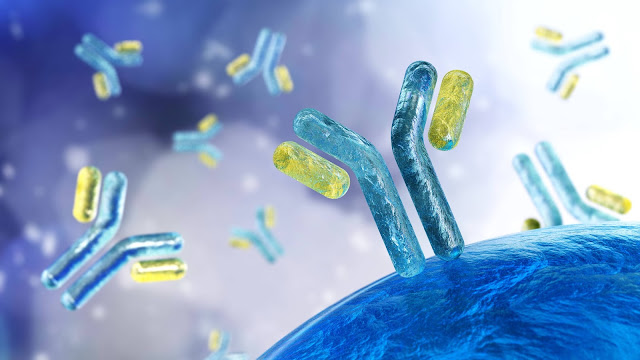Exploring Radioimmunoassay: Revolutionizing Medical Diagnostics
 |
| Radioimmunoassay |
Radioimmunoassay (RIA) stands as a pivotal technique in
medical diagnostics, enabling precise measurement of various substances within
biological samples. This sophisticated method has transformed healthcare by
offering unparalleled accuracy and sensitivity in detecting hormones, drugs,
and other biomolecules.
Understanding
Radioimmunoassay
At its core, Radioimmunoassay utilizes
the principles of immunology and radioisotope labeling to quantify specific
substances with utmost precision. The technique involves binding a radioactive
substance (tracer) to the molecule of interest, creating a radioactive complex.
When exposed to an antibody specifically designed to recognize the target
molecule, competition occurs between the labeled and unlabeled molecules for
binding sites on the antibody. This competition forms the basis for
quantification, as the amount of radioactive signal detected correlates with
the concentration of the target molecule in the sample.
Evolution
of Radioimmunoassay Techniques
Since its inception in the 1950s, Radioimmunoassay has
undergone significant advancements, leading to enhanced sensitivity and
specificity. The introduction of solid-phase Radioimmunoassay techniques, such
as enzyme-linked immunosorbent assay (ELISA), has revolutionized assay
procedures, offering faster results and reduced assay variability. Moreover,
the integration of automation and high-throughput platforms has streamlined
laboratory workflows, making Radioimmunoassay a cornerstone in clinical
laboratories worldwide.
Applications
in Clinical Diagnostics
The applications of Radioimmunoassay in clinical diagnostics
are vast and diverse. One of its primary uses is in measuring hormone levels,
including thyroid hormones, insulin, and reproductive hormones like estradiol
and progesterone. These measurements are crucial for diagnosing endocrine
disorders, monitoring hormone replacement therapies, and assessing fertility
issues. Additionally, Radioimmunoassay plays a vital role in drug monitoring,
detecting therapeutic drug levels in patients to ensure optimal treatment
outcomes while minimizing adverse effects.
Advantages
of Radioimmunoassay
One of the key advantages of Radioimmunoassay is its
unparalleled sensitivity, allowing for the detection of minute quantities of
substances in biological samples. This sensitivity is particularly beneficial
in diagnosing conditions characterized by low hormone levels or monitoring
drugs with narrow therapeutic windows. Furthermore, Radioimmunoassay offers
excellent specificity, distinguishing between closely related molecules and
minimizing cross-reactivity, thereby enhancing the accuracy of diagnostic
results.
Future
Trends and Innovations
Looking ahead, ongoing research in Radioimmunoassay focuses
on enhancing assay performance, expanding the range of analytes that can be
measured, and developing point-of-care testing devices for rapid and
decentralized diagnostics. Novel approaches, such as multiplex Radioimmunoassay
panels capable of simultaneously measuring multiple analytes, are poised to
revolutionize diagnostic capabilities further. Additionally, advancements in
radiolabeling techniques and detection technologies promise to make Radioimmunoassay
even more robust and versatile.
Regulatory
and Ethical Considerations
While Radioimmunoassay offers tremendous diagnostic benefits,
it is essential to address regulatory and ethical considerations associated
with radioactive materials and laboratory practices. Adhering to strict safety
protocols, proper disposal of radioactive waste, and ensuring compliance with
regulatory guidelines are paramount to the safe and responsible use of
Radioimmunoassay in healthcare settings.
Radioimmunoassay stands as a cornerstone of modern medical
diagnostics, offering unparalleled sensitivity, specificity, and versatility.
Its contributions to hormone analysis, drug monitoring, and disease diagnosis
have revolutionized healthcare practices, enabling clinicians to make informed
decisions and improve patient outcomes. As technology continues to evolve,
Radioimmunoassay remains at the forefront of diagnostic innovation, shaping the
future of medical diagnostics and patient care.



Comments
Post a Comment